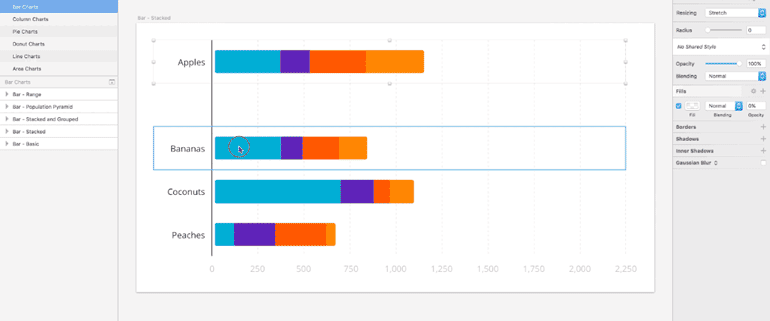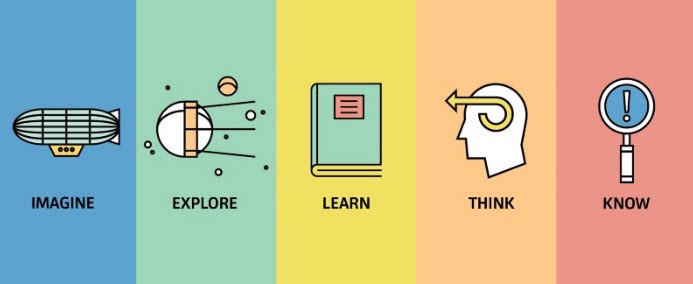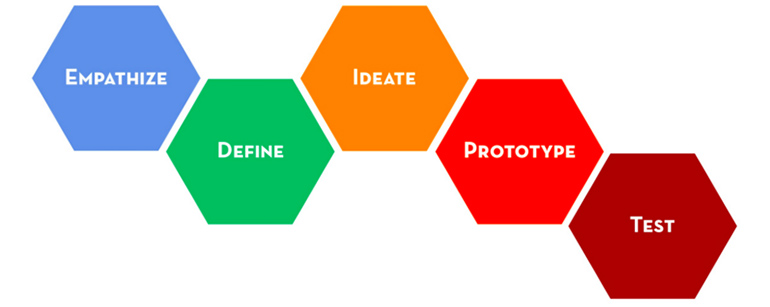- |
- |

Super8 is your monthly serve of brain food. It is curated inspiration and intelligence sustenance: eight bite-sized overviews of awesome articles we’ve read this month. We compile all the ingredients you need to stay on top of business, technology, marketing, content and design.
Each of the individual pieces are great on their own—but they’re especially excellent when they come together in easy-to-consume and comprehensive harmony. Kind of like a hamburger; something greater than the sum of its parts. With that in mind, I’ve combined this tasty assortment into a burger-themed format for your enjoyment. Each article is another layer to build up the ultimate article hamburger, with buns, sauce, meat, cheese and more. Welcome to Super8 in August!
1. 10 sketch tips for beautiful and maintainable charts.
- Read the full article here.
- Written by: Jon Moore.
- Submitted by: Steph Little.
This is the top bun of your burger—something soft and visually appealing to sink your teeth into first up. Good data is always pleasing, but it can be made even more so through considered design. There’s real value in presenting statistics and analysis with an element of artistry. Making data elegant is always exciting: both in practical application initially and the display of the eventual results.
Unfortunately, ‘PowerPoint aesthetics’ mean that outcome information is often presented as eyesore. In this piece, Jon Moore walks through some pro tips for creating beautiful, replicable sets of visual insight by creating better charts. It’s filled with practical insights, GIF walkthroughs and the knowledge gleaned from a specialist who has designed ‘a gazillion charts’.
2. The 40 best places to learn something new every day.
- Read the full article here.
- Written by: Larry Kim.
- Submitted by: Elliott Grigg.
In the interest of self-improvement, here’s an invaluable source—or sauce—of materials for both personal and professional development. We live in an era where knowledge is becoming increasingly democratised. These days, thanks to the intersection of technology and social online communities, you can master almost any discipline with a device and a decent wi-fi connection.
Take a look at this list and learn coding, cooking, knitting, how to speed read, improve your vocabulary, and more. And all from a variety of reputable institutions, including MIT, The Khan Academy, TED and Lynda. The challenge: teach yourself a new skill, every single day. Are you up to it?
3. This classic storytelling model will help you give a mesmerising presentation.
- Read the full article here.
- Written by: Alex Blinkoff via Visme.
- Submitted by: Vivi Chau.
Public speaking is a bit like a slice of pineapple in a burger. Some people loathe it, while others relish the experience in the absolute. Regardless of where you fit on that spectrum, the ‘monomyth’ can help rejuvenate your approach. The best speeches tell a story. And the best stories follow a repeating pattern. Stripped of their complexities, all stories are basically the same.
This piece looks into the idea of ‘The Hero’s Journey’. You can apply this formula to ensure your next presentation develops in a linear and engaging fashion. Adopt this classic storytelling model and align with the famous narratives of Odysseus, Captain Ahab, Jane Eyre, Luke Skywalker and more. Like that slice of pineapple, it’s sure to add a bit of zest and zing to proceedings—but hopefully it’s less divisive overall.
4. A look at tomorrow for digital marketers.
- Read the full article here.
- Written by: Richard Baxter.
- Submitted by: Rowan Barnes.
Richard Baxter provides the lettuce in this collection with some clean and refreshing insights into what’s next in search, crisply written from the perspective of a user or consumer. Digital marketers are always at the mercy of the astonishing rate their channels evolve. The key is to advance and adapt with one eye constantly on the horizon.
So what can we see in the digital marketing crystal ball over the next five to ten years? According to Richard, active search will become unexpected discovery, artificial intelligence is of increased importance and digital agencies begin to play the role of R&D hub.
5. Why the IOC social media clampdown is bad for the Olympics.
- Read the full article here.
- Written by: Anurag Harsh.
- Submitted by: Athalia Foo.
Much like the essential red rings of beetroot, the IOC’s outdated approach to media coverage of the Olympics has left a nasty stain in its wake. Three billion people viewed the opening ceremony; 85% were projected to have watched on a ‘second screen’. The official app is expected to eclipse 30 million downloads in the aftermath of the event. And yet, the media access rules were expressly anti-digital: outlawing GIFs, GFY, WebM and short video formats in reporting.
The whole episode is symptomatic of businesses increasingly losing touch with audiences across the globe. In order to protect traditional commercial assets and channels, like mainstream television for example, brands find themselves in an increasing contradiction: with so many hoping to encourage user engagements and shareable experiences, while actively taking steps that prevent them.
6. The 40% rule: a Navy SEAL’s secret to mental toughness.
- Read the full article here.
- Written by: Sidd Finch.
- Submitted by: Daniel Banik.
Sidd Finch hits us with a slice of cheese via this slab of practical wisdom. Think Gouda, Cheddar or Gruyere—intense, strong and uncompromising flavours. Heed these words and adopt those exact traits with the Navy SEAL’s secret to toughness. This piece tells the story of a billionaire, a Navy SEAL with apparent superhuman endurance, and the quest to push far beyond the boundaries of self-limitation.
So how far can you push beyond those personally implemented restrictions? Using the 40% rule, the SEAL at the heart of this story holds the record for most pull-ups in 24 hours (4,025), finished fifth place in a 135-mile footrace in California’s Death Valley, and completed an Ironman triathlon. Basically, if you think you are done or that you cannot contribute more, you’re wrong. Use this scientifically proven mental framework to push beyond your perceived limits.
7. Design and the self.
- Read the full article here.
- Written by: Irene Au.
- Submitted by: Mark Davis.
This meaty think-piece is the beef patty in your burger. In a comprehensive overview of the craft, Irene Au, Design Partner at Khosla, explores design’s many manifestations: as form, function, brand, experience, solution and ‘self’. After all, design encompasses much more than just the way something looks. A truly considered design caters to the way a product works; it generates a shared rapport between a brand and a user; it alleviates existing problems; it contributes to improved experiences and services overall; and it can even impact on the human spirit.
How does a certain style of watch make us want to be on time? Why do we associate with one inanimate object more than another? How did a poor, skinny orphan become Coco Chanel? How do we ‘create’ ourselves? Through the multiplicity of design.
8. Experience design essentials: animated microinteractions in mobile apps.
via Toma Reznichenko
- Read the full article here.
- Written by: Nick Babich.
- Submitted by: John Broadfoot.
Well-designed microinteractions are subtle elements of UI that make an overall experience feel whole. They are the underappreciated essentials that can pin a product together—just like the oft-unnoticed humble bottom bun.
Microinteractions are essential for a variety of reasons. Animation provides real-time insight into an application’s processing status. Visual feedback works because it appeals to our desire for acknowledgement within the experience. Transition interactions can provide clear usability instructions and simply make us smile. With some excellent tips for improved user experiences, and GIF examples of each in application, Nick Babich shows us why the magic is in the micro-details.
More Articles
Up for some more?
Get your monthly fix of August happenings and our curated Super8 delivered straight to your inbox.
Thanks for signing up.
Stay tuned, the next one isn't far away.
Return to the blog.







